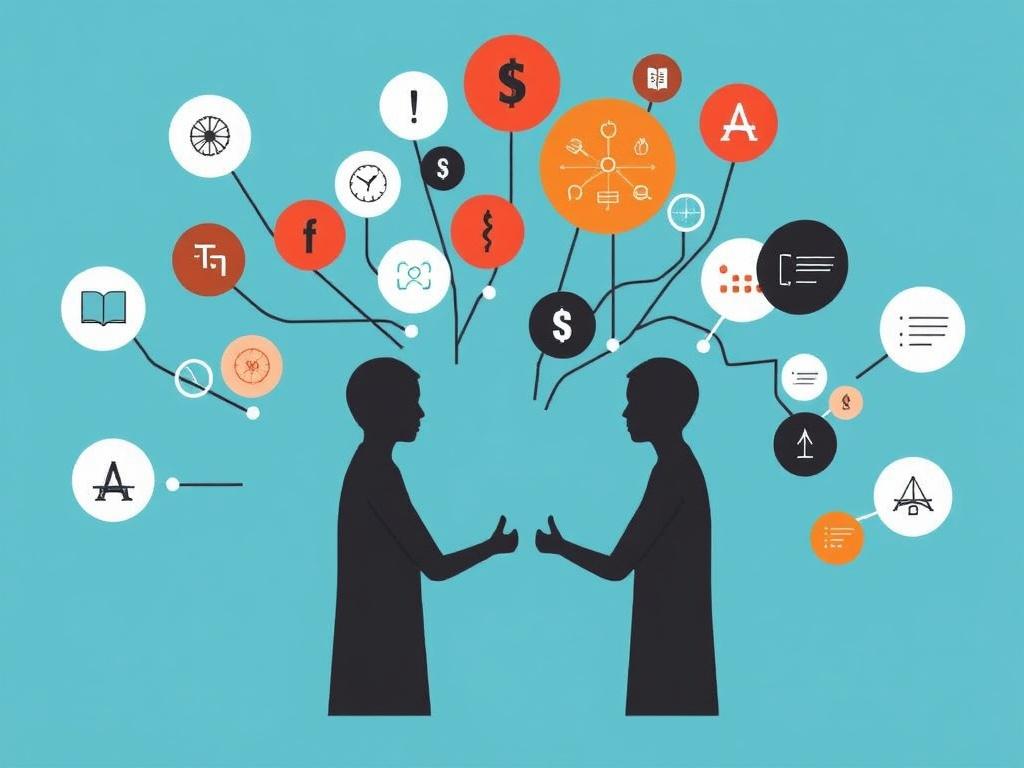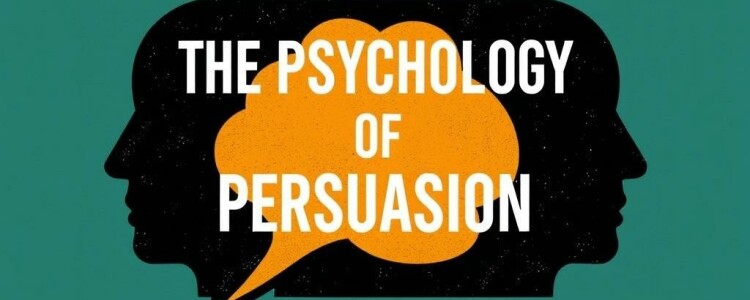Have you ever wondered why you suddenly feel the urge to buy something after watching a commercial or why a friend’s opinion convinces you more than a random advertisement? The psychology of persuasion is the fascinating field that helps explain exactly how and why people are influenced by words, behaviors, and social cues. From advertisers to politicians, from salespeople to everyday conversations, understanding the mechanisms behind persuasion can empower you both to recognize when you’re being influenced and to improve your own ability to sway others ethically.
In this article, we will take a deep dive into the psychology of persuasion, exploring key principles, psychological triggers, and real-world applications. We’ll also provide practical tips on how you can use persuasion responsibly in your everyday life. Whether you’re a student, professional, or someone curious about human behavior, this exploration will illuminate how subtle psychological forces shape decisions and actions all around us.
What is Persuasion and Why is it Important?

Persuasion is the art and science of influencing others to change their attitudes, beliefs, or behaviors. It goes beyond simply presenting facts; it involves appealing to emotions, building trust, and making communication compelling. Unlike coercion, persuasion works by guiding people to reach decisions that feel voluntary and self-motivated.
Why is the psychology of persuasion significant? Because in today’s world, persuasion surrounds us. From marketing campaigns to social media debates, from job interviews to everyday negotiations, persuasive techniques are essential tools. Understanding how persuasion works is crucial not only for business success but also for developing critical thinking and fostering genuine connections.
The Six Principles of Persuasion
One of the most influential frameworks in understanding persuasion comes from Robert Cialdini, a renowned psychologist. He identified six key principles that underpin most persuasive efforts:
- Reciprocity: When someone does something for us, we naturally feel inclined to return the favor.
- Commitment and Consistency: People strive for consistency in their actions and beliefs, often sticking to their initial commitments.
- Social Proof: We look to others’ behavior to determine how to act, especially in uncertain situations.
- Authority: People tend to follow the lead of credible, knowledgeable experts.
- Liking: We are more easily persuaded by people we like and find attractive or relatable.
- Scarcity: Perceived scarcity or limited availability increases desire and urgency.
These principles are used strategically in advertising, salesmanship, politics, and even everyday conversations. Let’s take a closer look at each.
Reciprocity: The Power of Giving to Receive
Imagine a store clerk who offers you a small free sample or a restaurant that provides complimentary bread. These simple acts create a feeling of obligation to return the favor, often by making a purchase. Reciprocity taps into a deep-rooted social norm where kindness deserves kindness.
Marketers use reciprocity by offering trial periods, free e-books, or small gifts, hoping recipients will feel compelled to respond positively. Psychologically, this principle creates goodwill and can break down resistance to persuasion.
Commitment and Consistency: Why We Keep Our Promises
Once we take a stand or make a choice, we feel motivated to behave in ways that are consistent with that decision. This principle is why getting someone to agree to a small request (foot-in-the-door technique) often leads to agreement on larger requests later.
For example, if a charity asks you to sign a petition and you agree, you’re more likely to donate when requested afterwards. This desire for consistency stems from the human need for a coherent and stable self-image.
Social Proof: Going Along With the Crowd
When unsure what to do, we look to others for cues—what people similar to us are doing often guides our behavior. This is why testimonials, reviews, and popularity indicators (like “best-seller”) are so powerful in persuading potential buyers.
Social proof works because humans are social animals; we survive and thrive by following group norms. Seeing others act in a certain way reassures us that the action is safe and acceptable.
Authority: Trusting Experts and Leaders
We tend to obey and be influenced by those we perceive as authorities. Whether it’s a doctor, a professor, or a well-known figure, their expertise lends weight to their recommendations.
This principle is often used in endorsements, where experts vouch for products or ideas. However, it’s important to critically assess true authority and avoid blindly following figures who may not be credible.
Liking: The Influence of Affection and Similarity
We are more likely to be persuaded by people we like. This liking can stem from physical attractiveness, shared interests, or simply a friendly demeanor. Marketers use celebrity endorsements, brand personalities, and relatable spokespeople because of this principle.
In everyday life, building rapport and finding common ground can dramatically increase your persuasive power because people tend to cooperate with those they feel connected to.
Scarcity: The Value of Limited Availability
Scarcity creates urgency. When something is rare or available for a limited time, people perceive it as more valuable and desirable. Flash sales, limited-edition offers, and countdown timers harness scarcity to motivate quick action.
Psychologically, scarcity heightens our fear of missing out, pushing us to act before opportunities vanish.
Psychological Triggers Behind Persuasion
Beyond Cialdini’s principles, several psychological triggers underlie persuasive communication. Recognizing these can help you understand why people respond the way they do.
- Emotion: Appeals to emotions like fear, happiness, or guilt can motivate behavior more effectively than facts alone.
- Framing: How an idea or offer is presented influences perception. For example, saying “90% fat-free” sounds better than “10% fat.”
- Anchoring: Initial information serves as a reference point against which subsequent information is judged. This is why initial price offers heavily influence buyer expectations.
- Repetition: The more often people hear a message, the more credible and familiar it seems.
- Contrast: Comparing options highlights differences and can steer choices by making one option stand out.
Common Persuasion Techniques in Everyday Life

Persuasion isn’t reserved for professional persuaders; we all use it daily without thinking. Here are some common techniques that rely on psychological principles:
| Technique | Description | Psychological Principle |
|---|---|---|
| Foot-in-the-door | Start with a small request to gain agreement, leading to larger requests. | Commitment and Consistency |
| Door-in-the-face | Make a large request expected to be refused, followed by a smaller request. | Reciprocity |
| Scarcity Appeal | Highlight limited availability or time constraints to spur action. | Scarcity |
| Social Proof | Use testimonials or popularity cues to build trust. | Social Proof |
| Authority Endorsement | Use expert opinions to validate claims. | Authority |
The Role of Ethics in Persuasion

With great power comes great responsibility. The psychology of persuasion offers tremendous potential to influence others, but ethical considerations must guide its use. Manipulating someone through false information, exploiting fears, or pushing unwanted behavior can cause harm and damage relationships.
Ethical persuasion prioritizes transparency, accuracy, respect for autonomy, and mutual benefit. It’s about inspiring others to make informed choices rather than coercing or deceiving. When done right, persuasion builds trust, nurtures cooperation, and creates win-win outcomes.
How to Improve Your Persuasive Skills
Whether you want to negotiate better, inspire teams, or influence buying decisions, honing persuasion skills is invaluable. Here are some practical tips informed by the psychology of persuasion:
- Build Rapport: Establish trust and connection through active listening and empathy.
- Use Stories: Narrative is powerful; stories evoke emotions and make messages memorable.
- Highlight Benefits: Focus on what’s in it for the other person, addressing their needs and desires.
- Be Consistent: Align your message with your previous words and actions for credibility.
- Leverage Social Proof: Share testimonials and examples of others who have benefited.
- Maintain Credibility: Don’t overpromise or exaggerate; honesty is vital for long-term influence.
- Use Scarcity Wisely: Emphasize unique advantages and timely opportunities without pressure.
Persuasion in the Digital Age
The rise of digital platforms has transformed how persuasion operates. Social media, targeted advertising, and influencer marketing use sophisticated algorithms and psychological insights to impact millions rapidly. Memes, viral videos, and online reviews are modern persuasion tools that shape public opinion.
But this new landscape also raises challenges. The speed of information sharing increases the spread of misinformation, making critical thinking more essential than ever. Being aware of persuasive tactics online helps you navigate digital content responsibly and avoid falling for manipulative schemes.
Psychology of Persuasion in Negotiations and Leadership
Successful negotiators and leaders excel at persuasion. They understand the importance of framing options, appealing to interests, and managing emotions. Negotiation involves not just logical arguments but also relationship-building and trust management.
Leaders leverage persuasion to inspire teams, drive change, and foster collaboration. Charismatic leaders use liking and authority principles, while servant leaders emphasize reciprocity and consistency to build lasting loyalty.
Summary Table: Key Psychological Principles and Everyday Examples
| Principle | Definition | Everyday Example |
|---|---|---|
| Reciprocity | Feeling obliged to return favors | Receiving a free sample and then buying the product |
| Commitment & Consistency | Desire to act consistently with prior commitments | Signing a petition, then donating to the cause |
| Social Proof | Following the behavior of others | Choosing a restaurant with many positive reviews |
| Authority | Listening to credible experts | Trusting a doctor’s prescription advice |
| Liking | Being persuaded by people we like | Buying products recommended by friends |
| Scarcity | Desiring things that seem rare | Buying a limited-time offer before it expires |
Conclusion
The psychology of persuasion is a captivating window into how our minds work and how subtle influences shape our choices daily. From the foundational principles of reciprocity and social proof to sophisticated digital techniques, persuasion is woven into the fabric of communication. By understanding these dynamics, you gain the power not just to protect yourself from undue influence but also to become a more effective communicator and leader. Remember, with ethics as your guide, persuasion becomes a tool for fostering connection, inspiring change, and achieving meaningful outcomes for everyone involved. So next time you find yourself swayed or persuading others, you’ll recognize the psychological threads weaving the invisible magic of influence.





















Это просто невероятно, как наш мозг постоянно поддается влиянию! Теперь понимаю, почему так легко меня убедить в чем-то, даже не замечая этого. Открытие года!